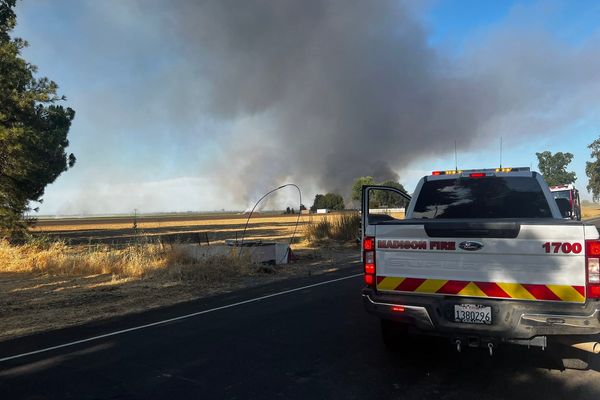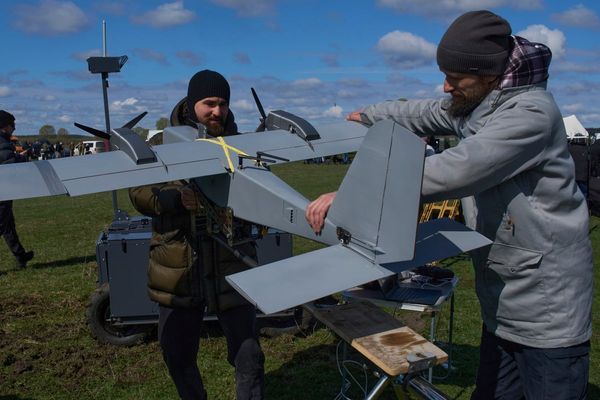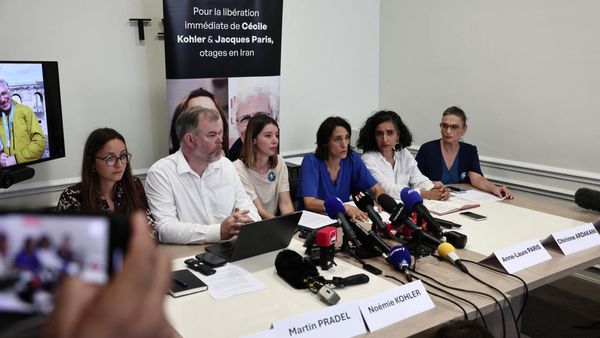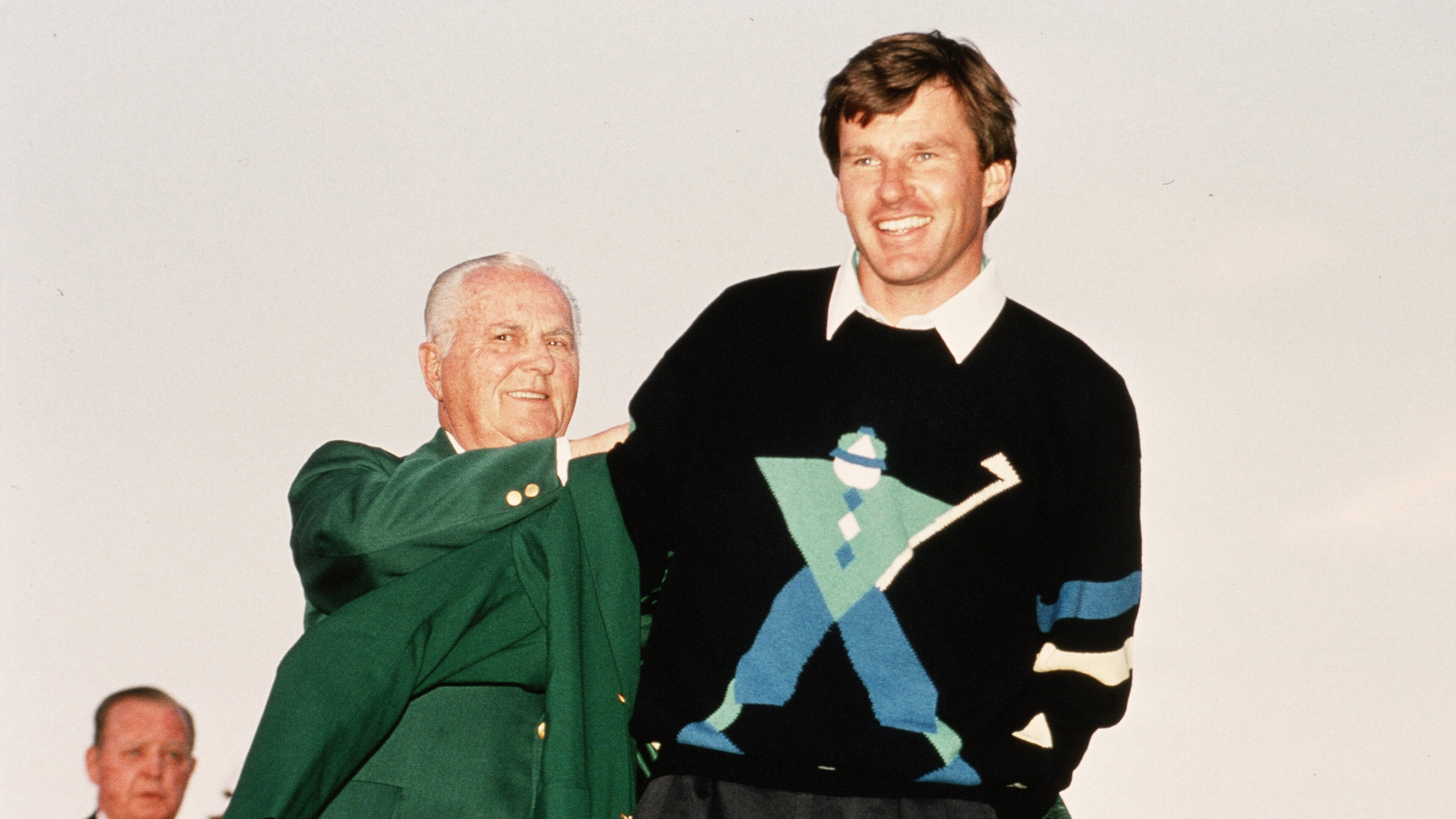
A picture taken just after the conclusion of the 1989 Masters displays how the fortunes of British and European golf had changed through that decade. A kilted Sandy Lyle helps a beaming Nick Faldo into a slightly ill-fitting green jacket. After 53 years without a Masters champion, Britain had produced two in consecutive years. After Lyle had played his famous shot from the bunker and then danced a jig on the 18th green in 1988, Faldo followed the Scotsman’s success with a memorable playoff victory over a disconsolate Scott Hoch in 1989.

Masters wins by Ballesteros and Langer earlier in the 1980s, and the Ryder Cup success at Muirfield Village in 1987, had given top players on this side of the pond confidence they were capable of beating the Americans on their own turf. The Masters of 1988 and 1989 confirmed it. Faldo went on to defend his title in 1990, Ian Woosnam claimed his Major at Augusta in 1991 and Faldo would make it a hat-trick of Masters wins in 1996. Britain had climbed into golf’s premier league and Nick Faldo had been instrumental in securing the promotion.
Faldo’s Journey
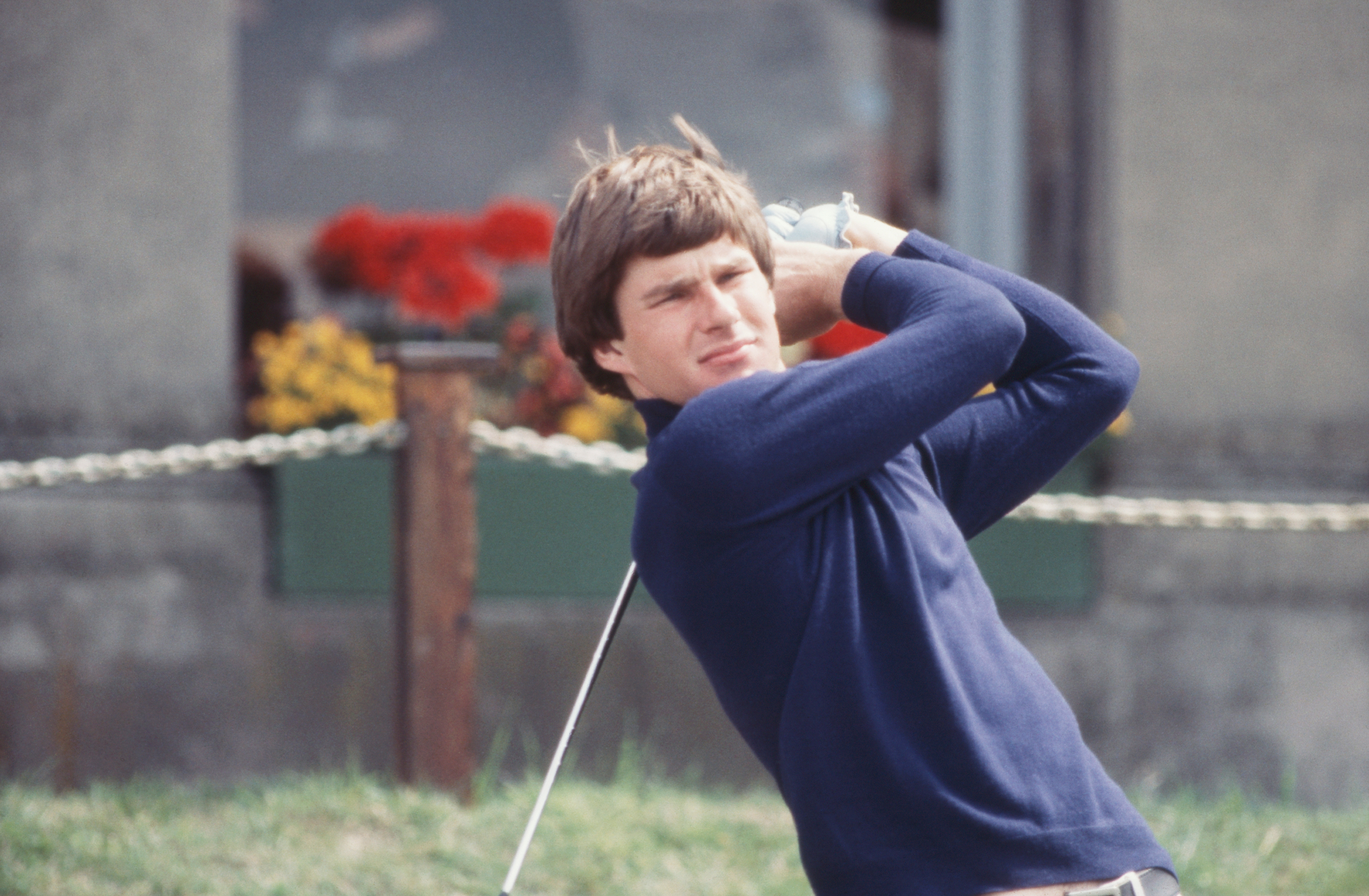
Nicholas Alexander Faldo turned professional in 1976 at the age of 18 having taken up the game just four years previously. His early career in the paid ranks was successful by the average pro’s standards, although Faldo had no wish to be average. He won his first European Tour event in 1977 and played in the Ryder Cup that year as a 20-year-old. He continued to win events and to feature in The Open Championship through the early 1980s. He played in The Masters of 1979 and again in 1983, 84 and 85, recording three top-25 finishes.
Faldo was making a good living from golf, but felt his game had limitations. He had watched the top players in the world, the likes of Greg Norman and Tom Watson and was aware he was trailing them in terms of ball striking. His rhythmic and stylish-looking swing contained technical flaws and it had consistently let him down in high-pressure situations. He needed guidance.
Faldo had met David Leadbetter in South Africa and, having endured a poor run of results in 1985, he bumped into him again on the practice ground before The Memorial at Muirfield Village. Faldo asked the Zimbabwean to analyse his swing and suggest where he was going wrong. The Englishman possibly hoped for a quick fix, but it wasn’t forthcoming. Leadbetter told him a complete rebuild was necessary if he was to be consistently competitive in Major championships. It was a process that Leadbetter estimated would take two years and would involve a huge amount of hard work and perseverance. Faldo considered and decided to take the plunge.
Principally, Faldo embarked on this dramatic overhaul with the objective of winning The Open Championship. He wanted to possess full control of the flight of his ball, to keep shots straight and low when hitting into the wind, to eliminate the blocks and hooks that had plagued him when the pressure had built. Displaying extraordinary resolve, Faldo achieved this goal. By the 1987 Open Championship he had mastered his new, measured and predictable technique and it enabled him to claim his first Major at Muirfield. The transformation of Faldo’s game was one of the greatest technical efforts in the history of golf. Leadbetter took the raw materials the Englishman possessed and helped him condense and mould them into a polished final product that would stand up to the highest scrutiny.
Ready For The Masters

Although fashioned with The Open foremost in mind, Faldo’s new found precision and control was also suited to the other Major Championships and he proved that through 1988. He started the season slowly and was only tied 30th in “Sandy’s Masters.” But he nearly won the US Open at Brookline, (losing a playoff to Curtis Strange,) was third in his defence of The Open and tied fourth in the USPGA. It was clear Faldo now had Major game.
Augusta was perfect for the Englishman’s poise and precision. It has always been a course that rewards accurate ball striking. From the tee, it’s essential to find the right sections of the fairways to afford the best angles from which to approach the sloping greens. On those approaches, the player must fire to the correct side of undulations to feed the ball towards, rather than away from the flags. Faldo was a great strategist and he had a clinical understanding of timing when it came to attack and defence – an attribute so crucial down the stretch at Augusta. As an example: In 1996, with Greg Norman reeling after losing his final round lead to the Englishman, Faldo turned the screw on the 13th with a wonderful 2-iron shot to the heart of the par-5 green. It effectively ended Norman’s already battered resistance.
Despite Faldo’s great Major form in 1988, and Sandy Lyle returning as defending champion, British fans were perhaps more hopeful than expectant as the 1989 Masters approached. Faldo had been playing poorly in the early season – a tie for 22nd in Los Angeles was his best PGA Tour finish, and Lyle was struggling too, with a pair of missed cuts in the build up to Augusta.
The Brits Are Coming
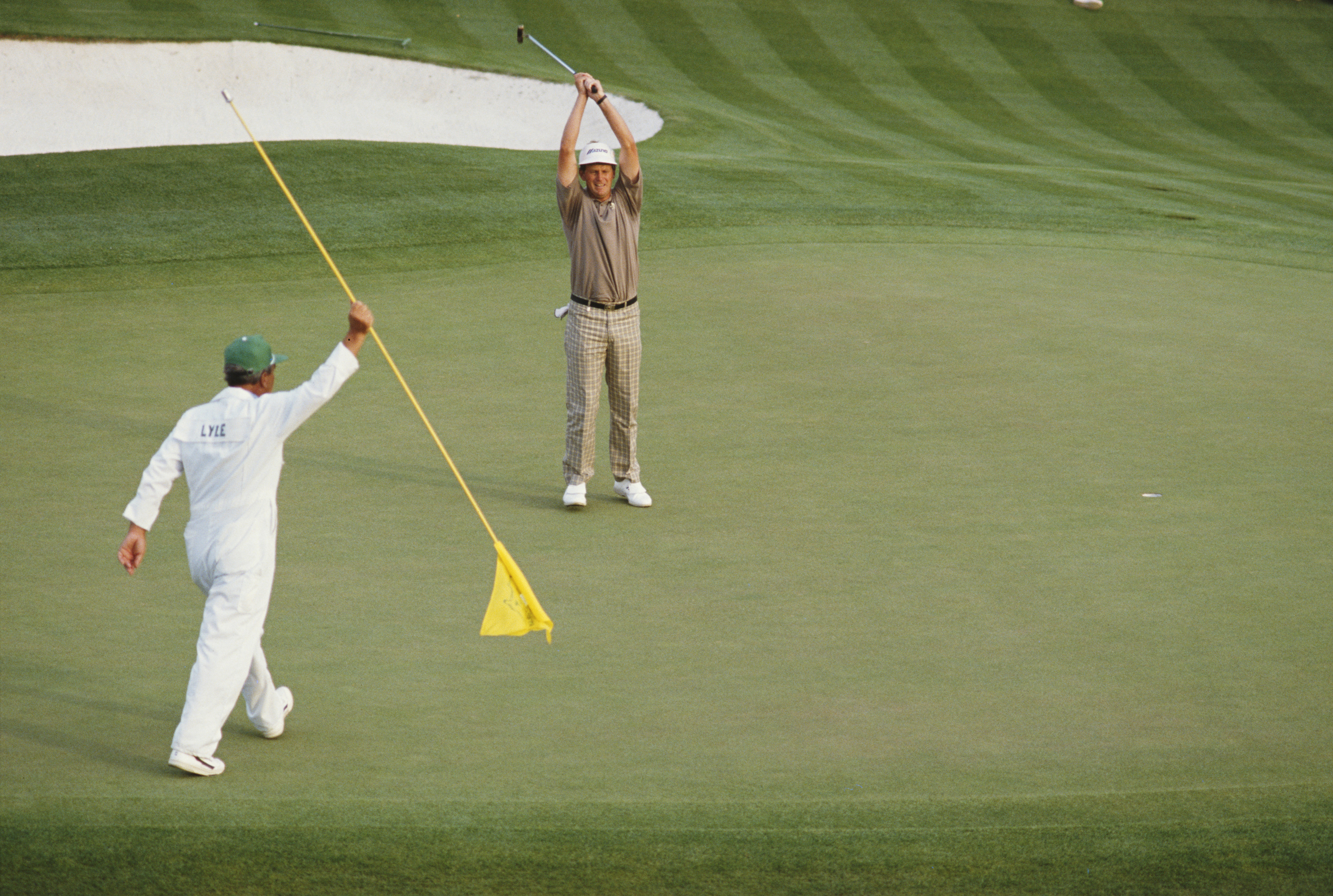
Prior to Sandy’s victory in the 1988 Masters, there hadn’t been a top-10 finish by a Brit at Augusta since Maurice Bembridge had been tied for ninth back in 1974. There were many, the Americans in particular, who felt Lyle’s win would be simply a British blip on the Augusta roll of honour. After Lyle and Faldo, the only other Brits in the top-50 on the Official World Golf Ranking were Ian Woosnam in ninth and Mark James down in 42nd. British golf had been hugely buoyed by Lyle’s Masters win in 1988 but, to turn it into a significant shift in power, it had to be backed up.
Faldo started the 1989 Masters with a superb 68 and followed with a 73 in testing conditions to share the halfway lead with veteran Lee Trevino. In round three, it looked as though the Englishman had played himself out of contention with a disappointing 77. But Faldo bounced back brilliantly in the final round, carding a wonderful 65 to post a 72-hole total of five-under-par. Only Scott Hoch was able to match him and that meant a sudden-death playoff for the title.
Hoch looked certain to win after he had lagged his birdie putt on the 10th hole and Faldo had been unable to get up-and-down for par. But then, having putted brilliantly all week, Hoch missed a two-footer to win the championship – an incredible mistake that would haunt him through his career. Faldo capitalised on the next playoff hole, the 11th. After two excellent shots, he holed out from 25 feet, lofted his arms and British fans could celebrate Masters glory once again.
A Title Defence

By The Masters of 1990, traces of expectation had begun to penetrate the resilient edges of British hope. For the first time since the tournament’s inception in 1934, Britain was in possession of a tournament favourite in Nick Faldo; although it would be more accurate to say he was co-favourite, together with World Number 1 Greg Norman.
The Australian wouldn’t be a factor at Augusta in 1990 though. He played poorly and missed the cut. “The Shark” would have to wait a few years for an Augusta duel with Faldo. It was 47-year-old Ray Floyd who would push the Englishman to the wire in 1990. The veteran had won the 1976 Masters and was renowned as a gritty competitor and a good front runner.
After Floyd had birdied the 12th hole in the final round to move four shots clear of Faldo, most felt the American had the tournament won. But Faldo wasn’t done. He birdied the 13th, 15th and 16th holes and, when Floyd three-putted for a bogey on the 17th, the pair were tied. That was how it stayed and Faldo was in a second consecutive Masters playoff. Again, it was on the 11th hole where the Englishman wrapped it up. Floyd pulled his approach into the water and Faldo was able to tap-in for a par and a third Major title.
Inspiring A New Generation
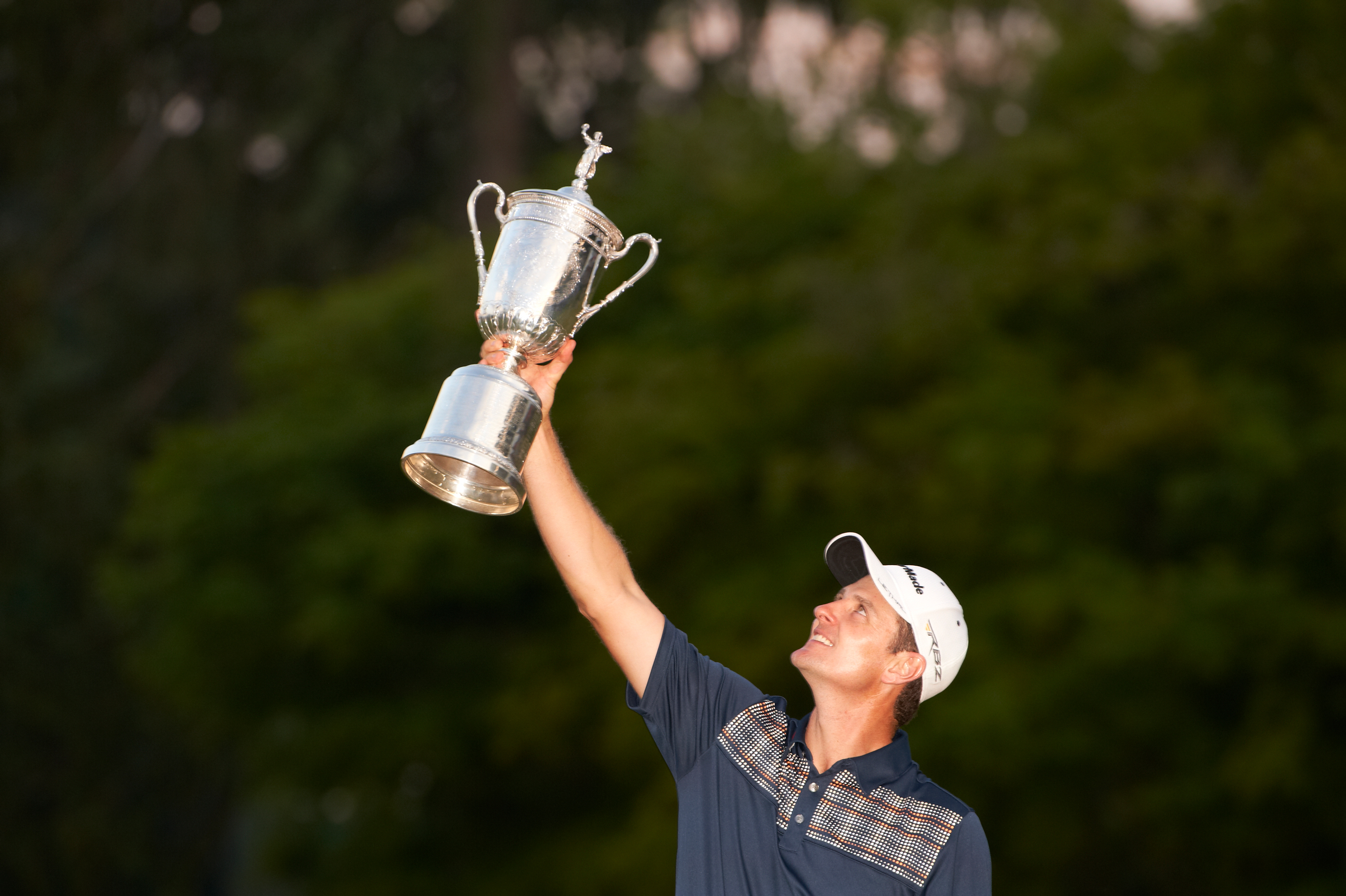
The Masters has always been an inspirational tournament for British golf fans. The event heralds the start of a new season and the dramatic colours, famous holes and perplexing slopes provide captivating viewing.
After Masters week the fairways of Britain become busy once again and, inevitably, more so after a British player has donned the Green Jacket. Wins by Lyle, Faldo and Woosnam provided inspiration for a generation of British golfers. The likes of Westwood, Clarke, Donald, Casey, Rose, Poulter and McDowell saw what could be achieved and strived to make it happen for themselves. Success breeds success and, not only through inspiration. Success also tends to lead to greater investment in the hunt for the next Nick Faldo or Sandy Lyle; youngsters receive more coaching, sponsorships, better equipment – more opportunities to excel. Faldo, himself set up a junior series that has provided encouragement to many of today’s stars, including Rory McIlroy and Melissa Reid.
The back to back Masters wins of Faldo, on top of Augusta successes from Seve, Langer and Lyle changed professional golf internationally, not just in Britain. Players from Europe, and across the world, were inspired by their victories. The American stranglehold on the year’s first Major was well and truly broken. In the 35 Masters between 1989 and 2023, 18 have been won by Americans, 17 by non-Americans.
In Faldo’s two wins, he’d come through playoffs against US players – Hoch and Floyd, who both possessed formidable reputations as exceedingly tough competitors. Faldo went head-to-head with them, on their home territory and came out on top. These triumphs only served to reinforce the fallibility of the Americans in European minds. Ryder Cup successes in 1985 and 1987 had showed the U.S. could be beaten and individual Major victories confirmed this.
Pushing Others On
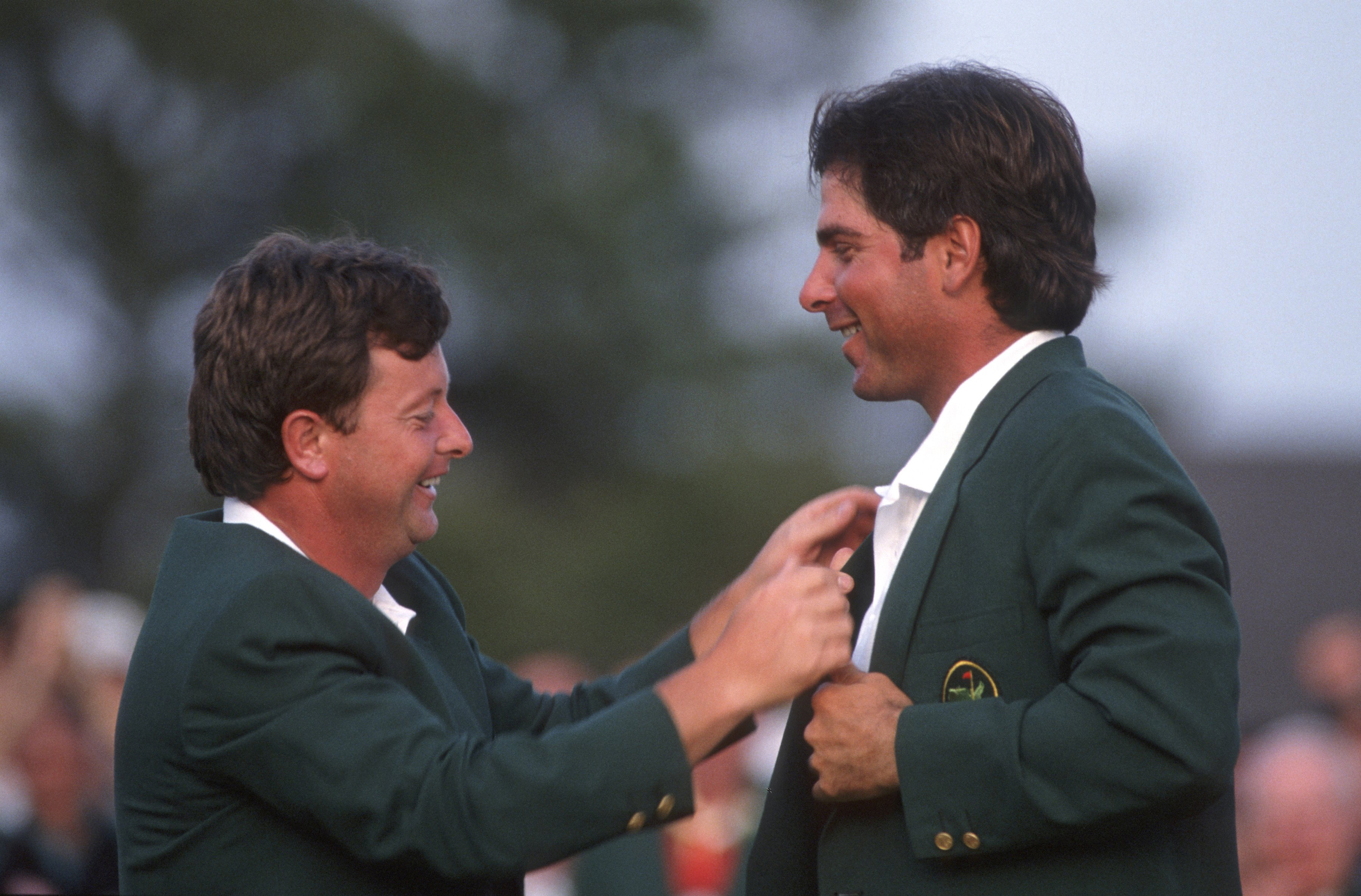
On the flipside, the Americans were inspired to find another level by the excellence of Faldo. The 1991 Ryder Cup provided clear proof of that. Never had a US side been so pumped up and so keen to show they were still top of the golfing world. Back at Augusta, seldom has a Masters winner been so popular Stateside as Freddie Couples when he ended the British run with his win in 1992. The success of Faldo and the other Brits pushed golf forwards on all fronts.
Faldo’s third and final Masters victory came through another head-to-head duel, this time against his great rival; Greg Norman of Australia. By spring of 1996, the face of the professional game looked very different. 13 of the 23 Majors contested since Faldo’s last victory at Augusta had been won by players from outside of the USA. The significance of this can be put into context if you consider that only 15 of the 100 Majors contested through the 1960s and 1970s were won by non-Americans.
In 1996, Faldo displayed his incredible mental strength and the resilience of his precision game under pressure. Starting the final round six behind Norman, he played brilliantly as the Australian capitulated. Faldo closed with a 67 compared to Norman’s 78 and the Englishman won by five to claim his sixth and final Major.
Nick Faldo’s Masters of 1989 and 90 backed up the victory by Sandy Lyle the previous year and the Open titles secured by the Scot in 1985 and Faldo in 87. These wins showed that Britain was, once again, a significant force in world golf. Their triumphs, together with Woosnam’s at Augusta the following year, inspired a generation of British golfers and encouraged investment into the game on this side of the pond. They also played a part in spurring international players to push on for glory against the dominant USA, and they drove the Americans to try and improve to re-establish their position as top dogs. With six Major titles, including three Masters, Nick Faldo was at the vanguard of a British movement that changed the face of golf.
European Milestones at The Masters

1965 – Ramon Sota of Spain is first European in post War period to record a top-10 finish at Augusta
1973 – England’s Peter Oostherhuis leads by three through 54-holes but falls back into a tie for third. First Brit to finish in the top-10 post War
1974 – Maurice Bembridge of England shoots final round 64 to make top-10
1977 – Seve plays his first Masters
1980 – Seve wins Masters aged 23
1983 – Seve wins again
1985 – Bernhard Langer makes it three European wins in the first five years of the decade
1991 – Ian Woosnam makes it four straight Masters victories for Britain
1994 – Jose Maria Olazabal makes it nine European wins in last 15
1999 – Olly is last Masters champ of 20th century
2016 – Danny Willett ends 17 year European Masters drought
Nick Faldo by the numbers
0 – Top-10 finishes at The Masters outside his three victories
6 – Major championship wins
26 – Top-10 Major finishes
41 – Professional victories
11 – Consecutive Ryder Cup appearances, from 1977 to 1997
3 – Times European golfer of the year
1979 – Made Masters debut
2003 – Made last Masters cut
2006 – Played last Masters
2009 – Receives knighthood for services to golf



